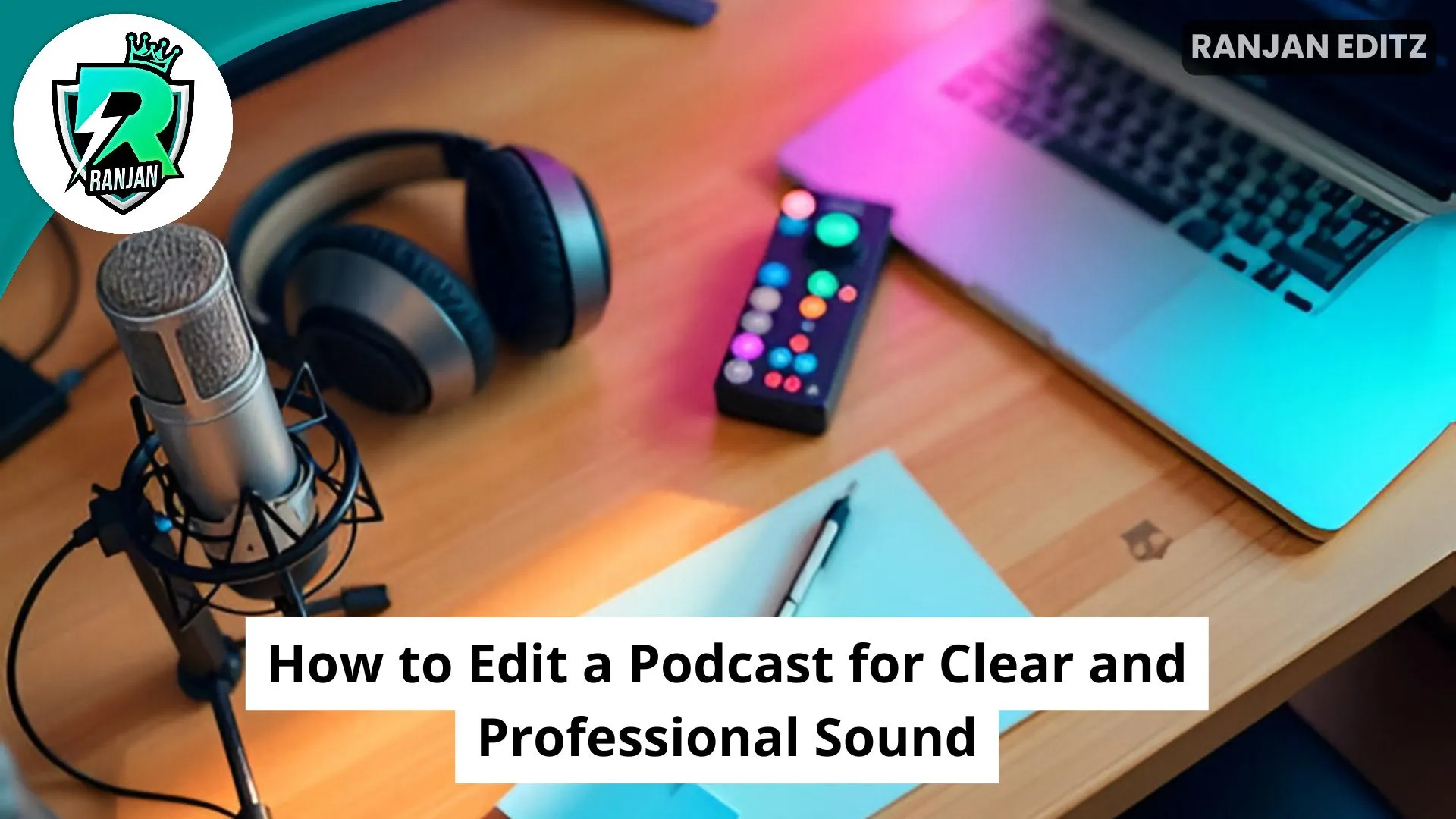The practice of podcasting continues to rise in popularity because it provides users with various methods to distribute information through storytelling to global listeners. The sound quality you deliver in your podcast directly influences the perception your audience develops about your content. Ineffective sound quality leads to listener disconnection but refined audio content draws listeners in so they establish trust in your work. This guide demonstrates the essential steps to edit a podcast for high-quality professional sound quality which produces an appealing listening experience.
Table of Contents
Learning About the Foundation of Podcast Editing Requires Attention
It’s vital to grasp the importance of editing since this knowledge teaches us how to begin our technical work. The editing process enhances audio quality while removing background noises and it balances sound levels while maintaining consistent transitions. Clear and professional podcast sound demands participants to work through various steps which includes noise reduction alongside equalization and compression together with mastering.
1. Choose the Right Editing Software
Every professional audio recording process begins with selecting proper editing software to achieve high-quality results. Multiple choices exist when it comes to podcast editing software and the most well-known programs consist of:
- Adobe Audition – A professional-grade software with advanced features.
- Audacity – A free and open-source tool suitable for beginners.
- GarageBand – Ideal for Mac users with basic editing needs.
- Reaper – An affordable yet powerful digital audio workstation.
Your decision for podcast software depends on your experience level along with your budget constraints and what type of editing you need to perform. The mastery of professional audio editing techniques in podcasts can only be attained through dedicated practice together with patience in usage of any available tool.
2. Record High-Quality Audio
High-quality audio recordings at the start eliminate the need for excessive editing work in the first place. Recordings need a suitable microphone in an acoustically silent area positioned correctly. The use of a pop filter along with acoustic treatment allows for reduction of plosive noises and background echos.
3. Remove Background Noise
Background noises represent an enormous obstacle during the editing process of podcasts. Using most modern editing programs will provide you with noise reduction capabilities that can clean up damage to your audio files. The following procedure will allow you to effectively remove noise:
- Focus on a part of the audio where the only noise element exists.
- The sound profile should be analyzed using the noise reduction tool.
- Use noise reduction techniques on the complete track but preserve the natural tone of the voice.
4. The editing process should delete any mistakes together with additional sounds you want to remove.
All competent podcast productions must present a continuous and organic delivery. Mistakes together with filler words “uh” and “um” as well as prolonged pauses and background noise need to be edited out for enhanced clarity. A combination of fade transitions with cuts allows listeners to experience a flowing podcast structure.
5. Balance Audio Levels
The same sound quality issue distracts listeners when volume levels remain inconsistent. All speakers emerge clearly throughout the audio by equalizing their volume levels. The following steps will lead to an optimal balanced sound production:
- The application of compression techniques will normalize volume variations throughout the recording.
- You should modify gain parameters for maintaining uniform sound levels.
- Keep audio peaks from exceeding 0 dB in order to prevent clipping.
To achieve clean professional podcast audio the editor should take time to adjust levels since abrupt volume fluctuations result in a poor listening experience.
6. Apply Equalization (EQ)
The audio frequency control element known as EQ gives you the power to modify podcast sounds. Through this technique you gain better vocal comprehension while eliminating background noises. A well-EQ’d podcast will have:
Reduced low-end rumble (below 80 Hz)
- The audio frequency range from 1 to 4 kilohertz requires additional boost to achieve vocal presence.
- Proper adjustment of higher frequencies works to prevent the sound from becoming too harsh.
- You should try various EQ settings to discover the settings which yield a balanced and natural sound.
7. The application of compression controls the sound quality to achieve professionalism.
The application of compression enables users to balance wide-reaching volumes along with maintaining consistent speech quality. The perfect compressions parameters for podcast production consist of:
- A ratio of 3:1 or 4:1
- A reasonable combination between time parameters for attack and release functions
- The compression threshold needs adjustment when spikes occur in order to avoid damaging the signal.
- Correct compression technique plays an essential role in podcast editing because it keeps voices both clear and balanced throughout the audio.
8. Add Music and Sound Effects Wisely
Your podcast quality will increase through the use of supporting audio elements such as music and sound effects. Music and sound effects should be supplemental elements to the content without competing for dominance over it. Ensure that:
- The audio volume of music should be quieter than the loudness of spoken language.
- Together with their strategic employment comes effective use of sound effects in the production.
- The passage between audio tracks appears uninterrupted.
9. Mastering the Final Audio
The final step of audio editing consists of mastering which makes a podcast sound polished for professional consumption. Here are some mastering techniques:
- Normalize the total volume strength according to standard podcast norms (-16 to -14 LUFS).
- A limiter function should be used both to control potential distortions and produce maintained consistency.
- Choose a high-quality export format which should be 128–192 kbps MP3.
10. Review and Test Your Podcast
A complete assessment of consistency requires listening to your podcast across multiple devices including headphones speakers and smartphones before final release. Request testing feedback from a target audience and conduct changes to the delivery based on their responses.

